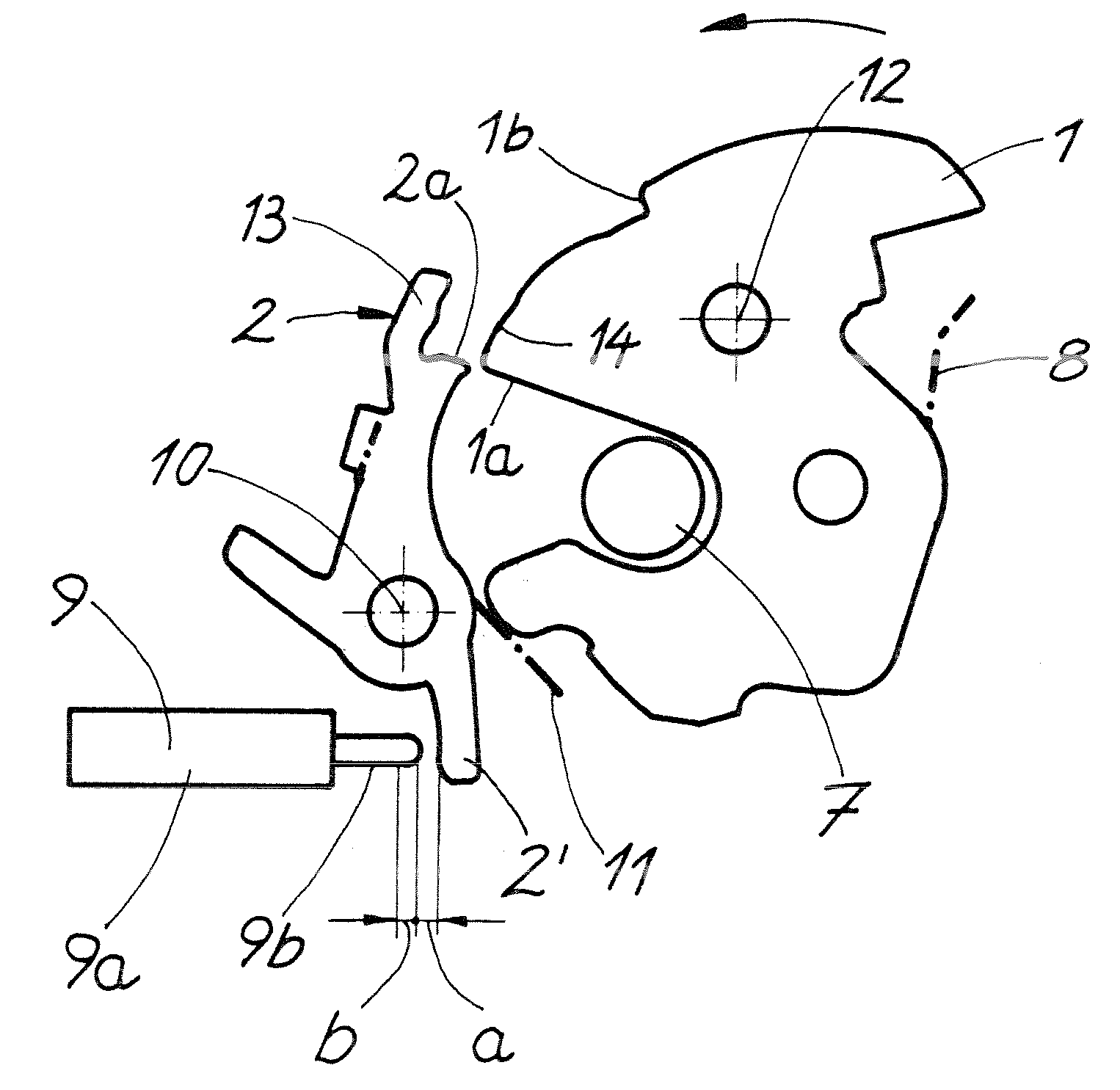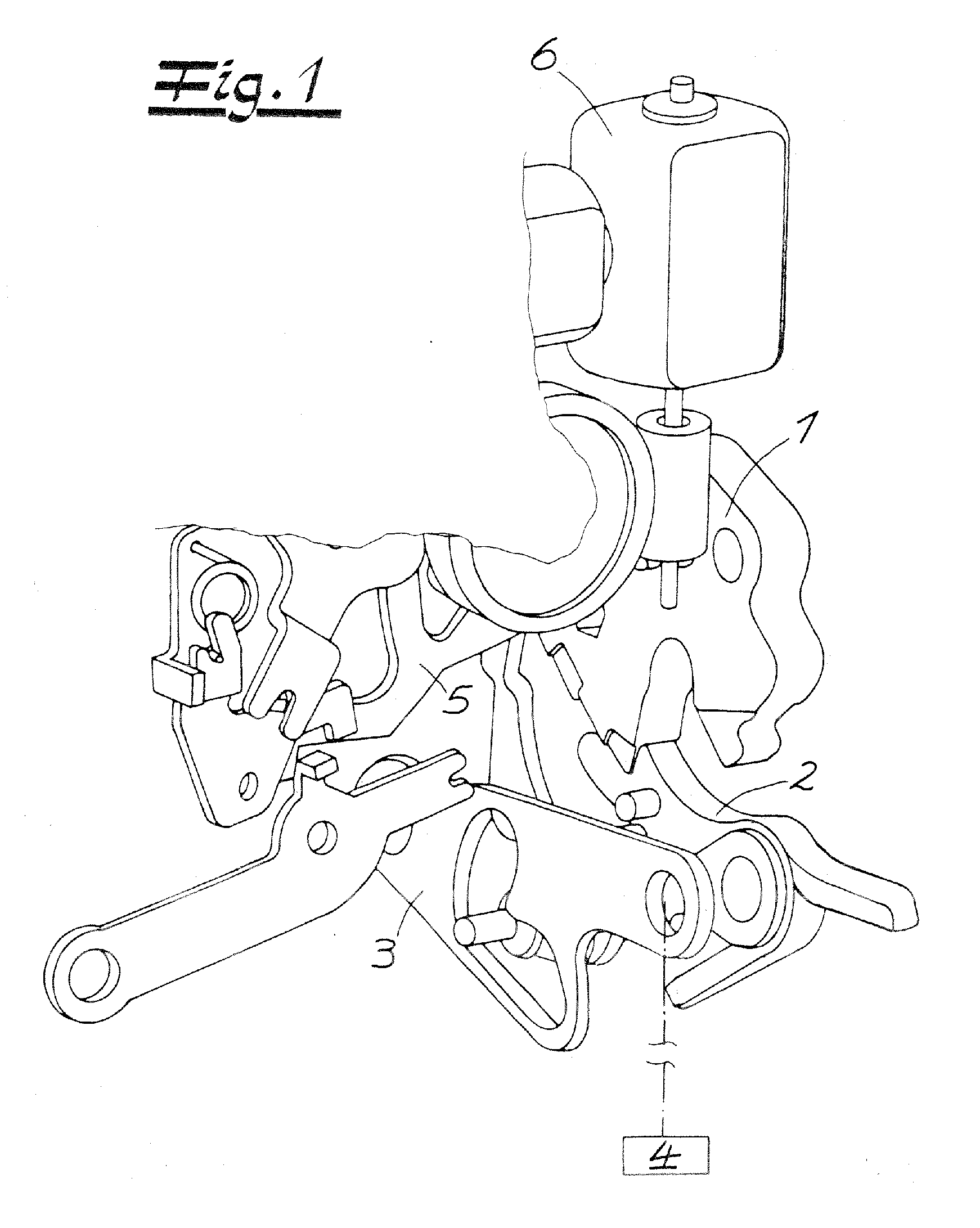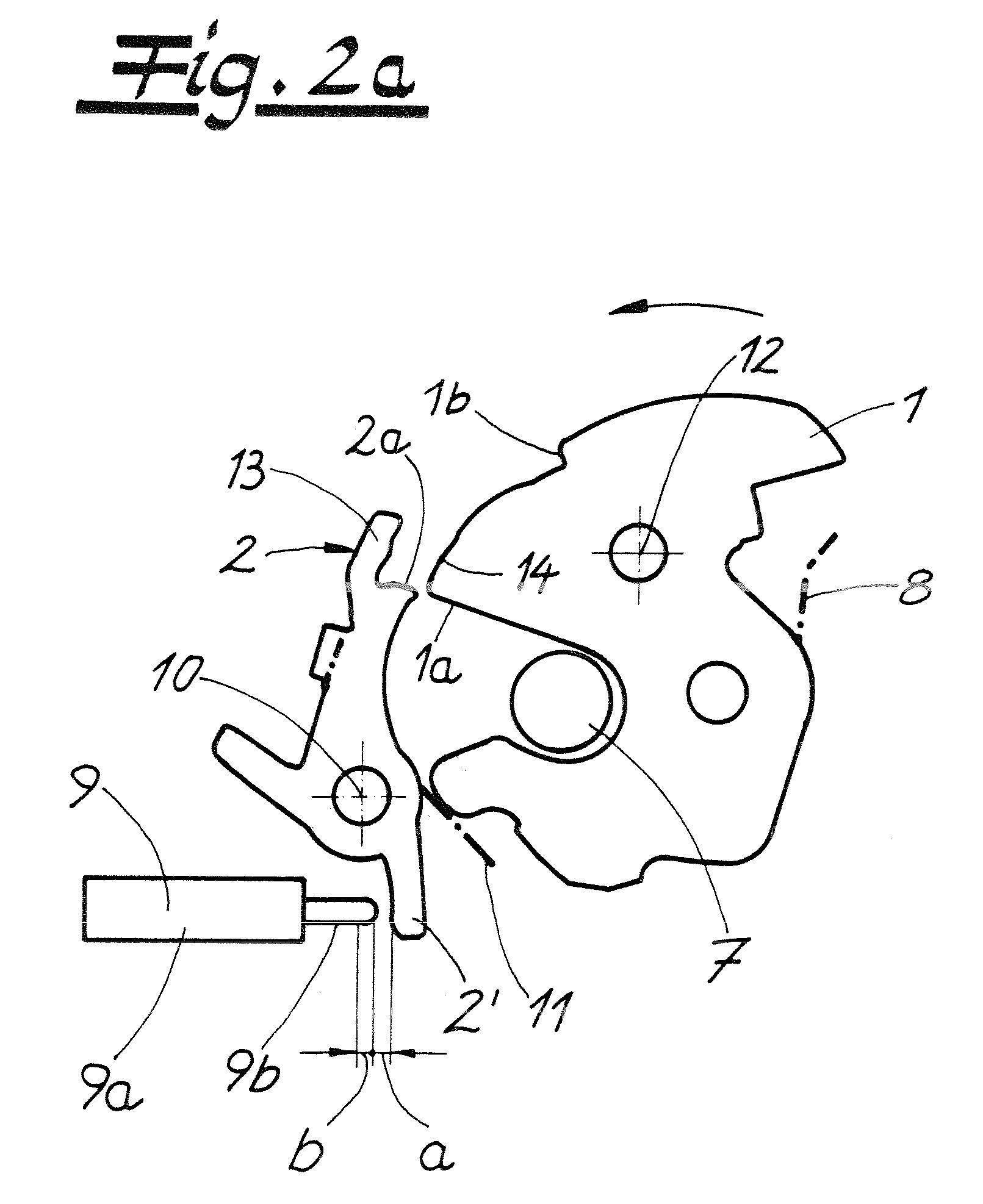Motor vehicle door latch
a technology for motor vehicles and latches, applied in the direction of building locks, fastening means, dampening of movement of lock parts, etc., can solve the problems of generated noise and still present a problem, and achieve the effect of facilitating undampened movement, reliable functioning, and reducing nois
- Summary
- Abstract
- Description
- Claims
- Application Information
AI Technical Summary
Benefits of technology
Problems solved by technology
Method used
Image
Examples
Embodiment Construction
[0023]FIG. 1 shows a motor vehicle door latch with a locking mechanism 1, 2 comprising a catch 1 and a pawl 2. Also apparent from the figure is a release lever 3, disengaging the pawl 2, which release lever 3 can be connected to a handle 4.—The figure shows a partial view of a central locking lever 5, operated by a motor 6. Depending on the position of the central locking lever 5, i.e., “unlocked” or “locked,” the pawl 2 can or cannot be disengaged with the aid of the handle 4, respectively.
[0024]FIGS. 2a to 2c show the details of the locking mechanism 1, 2 interacting with a closing bolt 7. During the closing of an associated motor vehicle door, a lid or a similar device, the closing bolt 7 initially moves the catch 1 by turning clockwise around axis 12 to its overtravel position as indicated in FIG. 2a. As a result of being in this overtravel position, a gap in the direction of the circumference is visible between a primary position 1a and / or the associated stop surface and a bloc...
PUM
 Login to View More
Login to View More Abstract
Description
Claims
Application Information
 Login to View More
Login to View More - R&D
- Intellectual Property
- Life Sciences
- Materials
- Tech Scout
- Unparalleled Data Quality
- Higher Quality Content
- 60% Fewer Hallucinations
Browse by: Latest US Patents, China's latest patents, Technical Efficacy Thesaurus, Application Domain, Technology Topic, Popular Technical Reports.
© 2025 PatSnap. All rights reserved.Legal|Privacy policy|Modern Slavery Act Transparency Statement|Sitemap|About US| Contact US: help@patsnap.com



